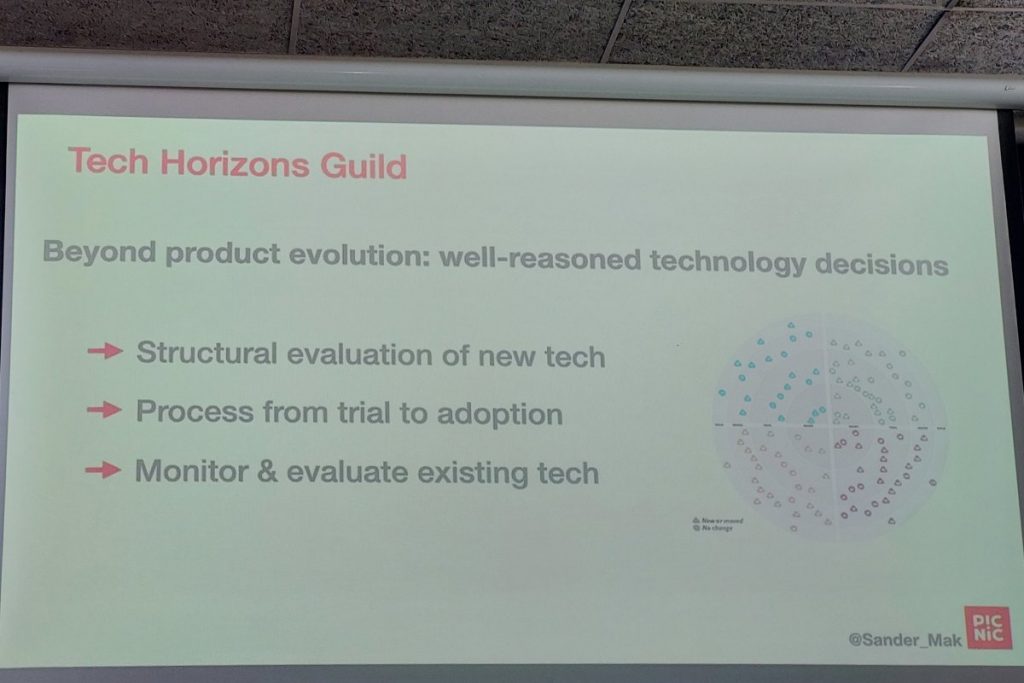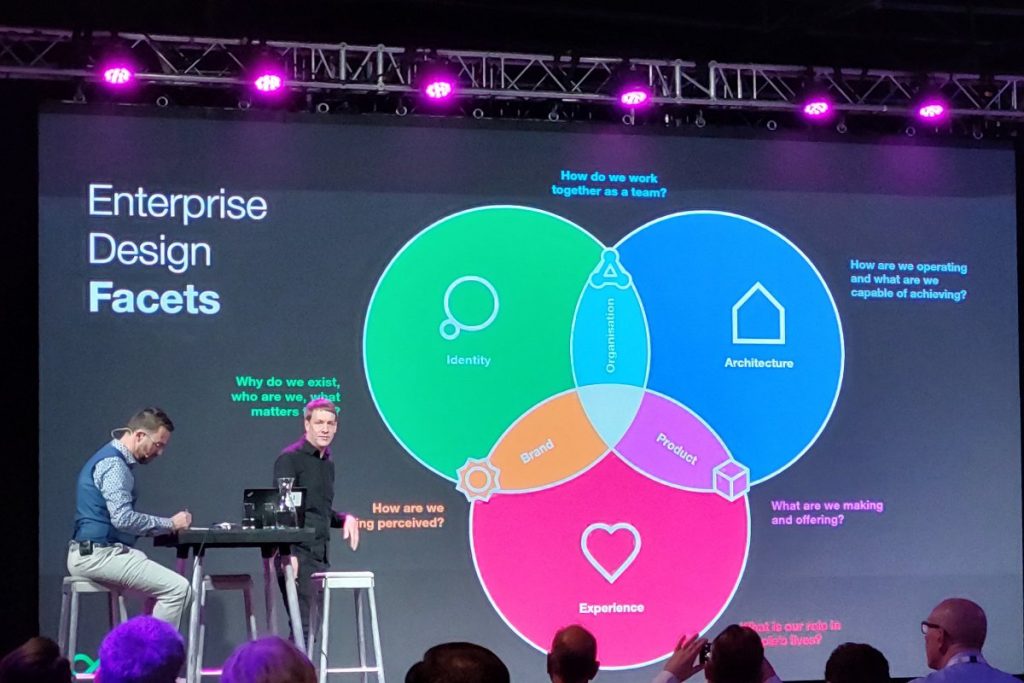
5 take-aways from DADD 2021
It is always a please to attend the Digital Architecture Design Conference. The last time I attended was just before COVID-19 pandemic hit in November 2019. So after such a tumultuous time, it is no coincidence that the theme of this conference is: Dealing with (Natural) Disruption: Building Resilient Organisations & Systems. This time, the conference was hosted in the Rijtuigenloods in Amersfoort. The location was a bit smaller that previous years, but there were enough rooms for hosting the talks and there was a spacious central area for coffee/lunch breaks. I have attended some interesting talks and will present my major take-aways.
1) Conway’s law is still present
Conway’s law was referenced in 3 talks. That law states that systems are designed akin to the communication structure of the organization. And that this is an important reason why systems can fail. Software development teams that often communicate with each-other will see their respective software applications or micro-services work fairly well together. While software development teams that do not have this connection will produce software applications or micro-services that do not align very well. This was reflected in the talks of Sander Mak from Picnic, of Milan Guenther from the Intersection Group, of Annelore Luning and Eltjo Poort from CGI and of Evelyn van Kelle and Paul de Raaij from Qxperts.
2) Context is everything in design
Another big topic was that design is really depended on the context of the organization. This was discussed by Milan Guenther by referencing Identity in his Design System framework. He describes Identity as “the shared understanding of our purpose, personality, culture, values and aspirations, as it is perceived and lived everyday by people’s behavior, communication and choices”. It was interesting to hear from an expert on User Interface and User Experience design, who encountered the same problems that we architects face in organizations. You can only design successfully if the solution fits in the organization and is pleasant to use. Otherwise, people will work around your solution. So understanding the context is very essential to developing a great design.
A similar topic was discussed in the talke of Annelore Luning and Eltjo Poort. They defined this as the ‘headless chicken’ problem. Where there is great architectural modelling, decision making, (project) execution, testing and validation. But that the solution is not geared towards the real needs of the organization.
3) Architecture needs to be aligned across software development teams
Multiple talks emphasized the need to align Architecture across software development teams. This was reflected in the talks of Anneke Keller from Wehkamp, of Sander Mak from Picnic and of Evelyn van Kelle and Paul de Raaij from Qxperts. Software development teams in an Agile world need to be able to work autonomously. This is also the underlying idea of the Spotify model and you can also find this underlying idea in the micro services design pattern.
While there is a need for autonomy, there is always a dependency between software development teams. As micro services need to be able to work together. And there are efficiencies to be gained by using a common software stack or a common CI/CD environment or a common infrastructure. Architecture (and not Architects) is about finding these commonalities and establishing common standards across the (technical) organization. In Picnic they have formed the Architecture Working Group that is populated by senior technical people who have an architectural role besides their work as Tech Lead. Qxperts referred to this as the Accidental Architects who need to become Collaborative Architects.
4) Technical debt is still a major cause for concern
The need to combat technical dept was also addressed multiple times. In the talk of Annelore Luning and Eltjo Poort a case was discussed in which a certain system wasn’t updated for 6 years, because of frequent managerial changes. After resolving that situation, they decided that such a situation needed to be prevented at all costs. The only way to do that was to always stay ahead of the technology curve. The talk of Anneke Keller also addressed this by discussing a system that was causing a lot of problems every release. Instead of doing less releases, Wehkamp decided that they would instead start doing more of them (moving towards daily releases). They experienced one month of pain. But they are now able to release software 3 times a day without many problems. Sander Mak discussed how they at Picnic aligned on the technical level to explore new technologies. And to research which systems should be depreciated. To prevent these situations from happening.

5) Its great to connect with other architects and share common experiences
The COVID-19 pandemic has taught us that we as people are very resilient. We are very resourceful in nature and we will find ways of communicating to make sure that the business can continue. We discovered that we can be just as productive when working from home as when working at the office. And it is certainly great that modern technology allows us to virtually meet each other and stay up-to-date.
But there are also things that get worse in the online space. When I attend online conferences, my attention drops after 1 or 2 hours. I start answering e-mails, instead of focusing on the talks. In the Netherlands (after showing our Corona QR codes) we are now able to organize events where we can meet in person. And even though I also experienced fatigue after a couple of talks, it was easier to stay in the moment. To not look at my phone or laptop. And to learn from other architects. That is what I really appreciate from the Digital Architecture Design Day. The ability to connect with others and share common experiences. It’s great that this is possible again.
Published: 7 October 2021
